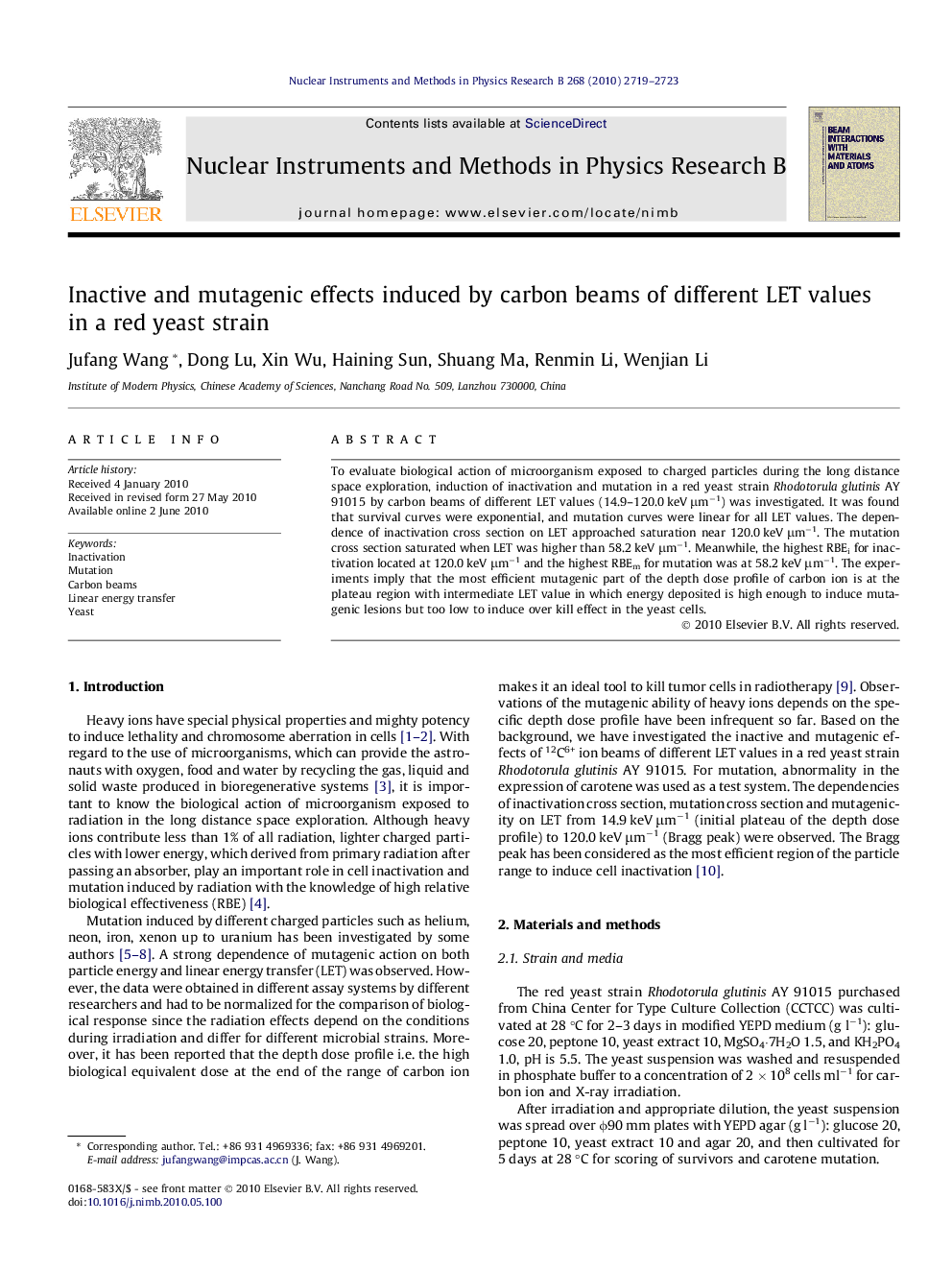| Article ID | Journal | Published Year | Pages | File Type |
|---|---|---|---|---|
| 1681642 | Nuclear Instruments and Methods in Physics Research Section B: Beam Interactions with Materials and Atoms | 2010 | 5 Pages |
To evaluate biological action of microorganism exposed to charged particles during the long distance space exploration, induction of inactivation and mutation in a red yeast strain Rhodotorula glutinis AY 91015 by carbon beams of different LET values (14.9–120.0 keV μm−1) was investigated. It was found that survival curves were exponential, and mutation curves were linear for all LET values. The dependence of inactivation cross section on LET approached saturation near 120.0 keV μm−1. The mutation cross section saturated when LET was higher than 58.2 keV μm−1. Meanwhile, the highest RBEi for inactivation located at 120.0 keV μm−1 and the highest RBEm for mutation was at 58.2 keV μm−1. The experiments imply that the most efficient mutagenic part of the depth dose profile of carbon ion is at the plateau region with intermediate LET value in which energy deposited is high enough to induce mutagenic lesions but too low to induce over kill effect in the yeast cells.
